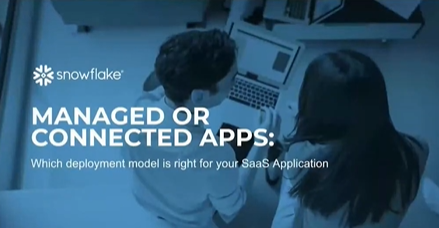
Being able to put data in the cloud enables developers to create better applications faster, and also to deliver those applications in a way that suits both their needs and the needs of their customers.
One possible model for deployment is a Managed Deployment Model. This is a model in which the company is able to deliver a fully managed service while storing customer data in their data platform.
However, more recently companies have been starting to explore a Connected Deployment Model. In this model, code and data is separated in a way in which the application provider creates and maintains the code, while customers retain control over their data.
In an SD Times Live! event, data company Snowflake explained more about the differences between the models as well as information on how to choose the right one for your situation.
According to Brad Culberson, principal data platform architect in the field CTO office at Snowflake, the connected model gives customers a lot more controls that they wouldn’t have in a traditional managed offering, such as managing compute and budgets.
“In this model, there are no cross customer datasets, and all data is well-isolated into the owning customers accounts,” said Culberson. “It’s much, much easier to get approvals from inside of organizations because you’re always in control of the data set, and no matter what’s happening, you always have the capability to redact and revoke access at any point in time in the future.”
Culberson continued on adding that this model scales well to a large number of customers. Other benefits include shifting infrastructure costs to the end customer and greater flexibility for the customer.
To learn more about how to get started with a Connected Deployment Model, watch the replay of the webinar here.






